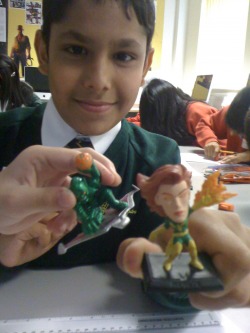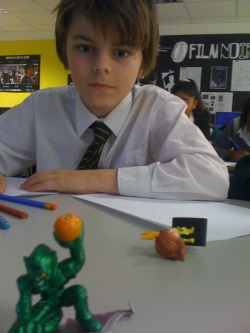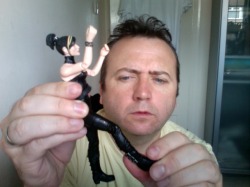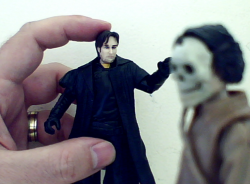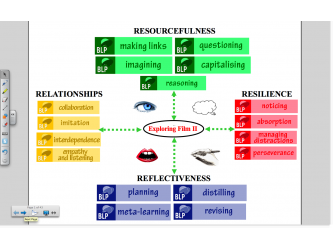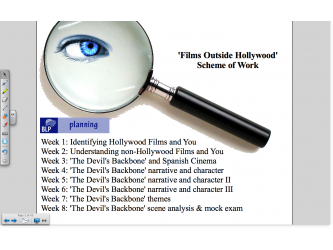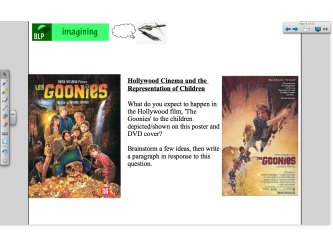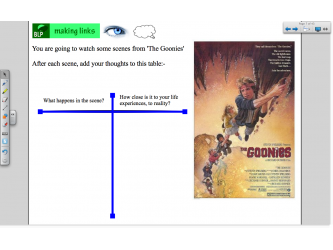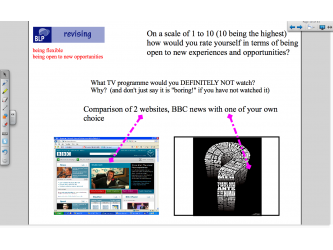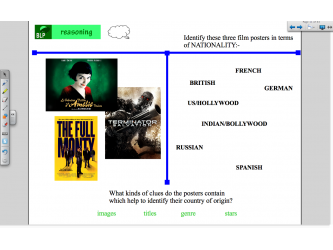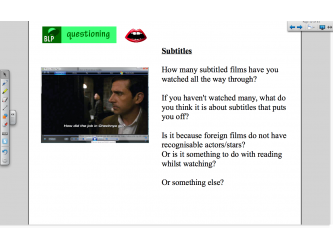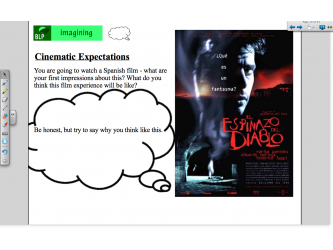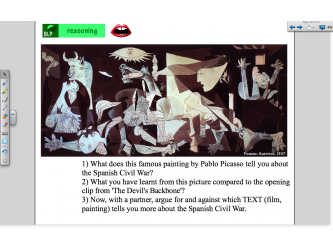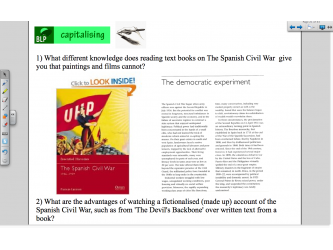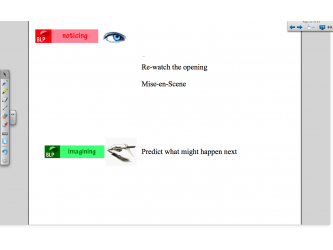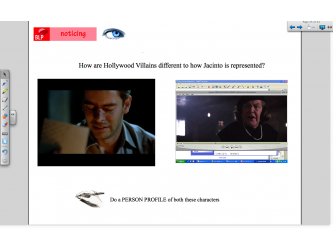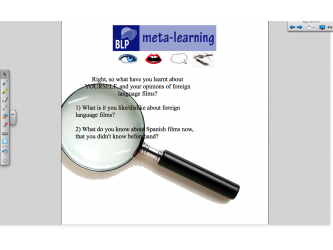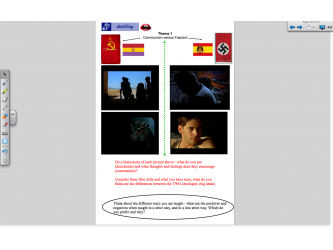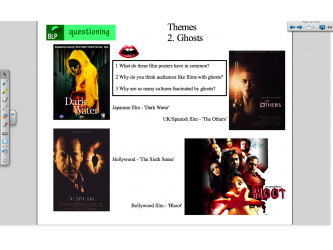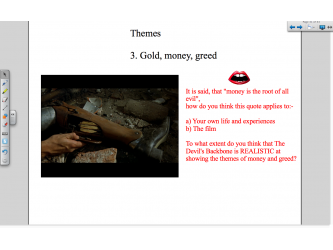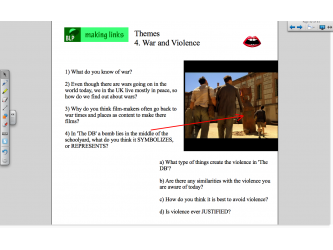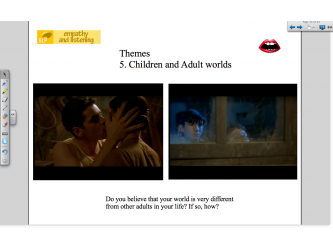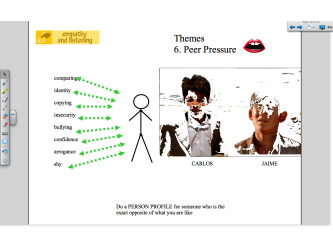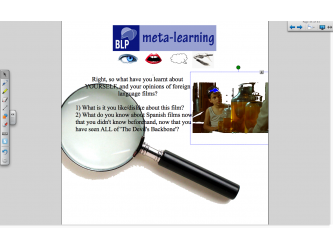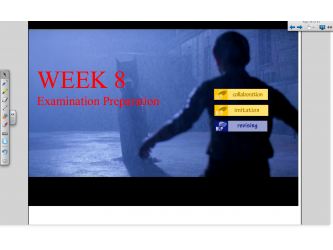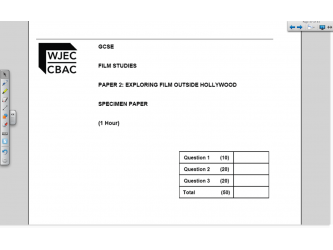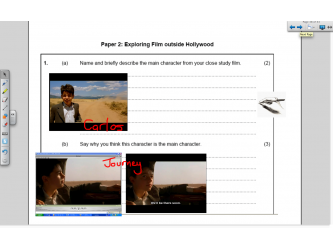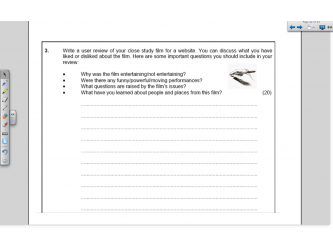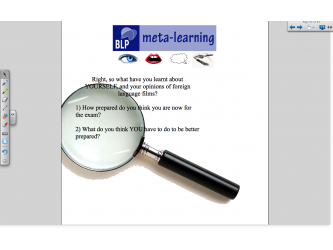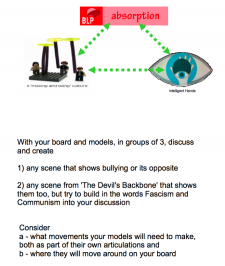Vocademia: an exploration and a construction
Putting Vocademic Theory Into Practice
This page is dedicated to putting into classroom practice the ideas and theories expounded upon in other areas, particularly from the IDEAS page.
The first part is a description and review of a pilot, which was a highly experimental use of my early ideas about vocademic learning, delivered in early July of this year.
The second is the creation of a Vocademic Scheme of Work, written on the back of this earlier pilot, and to be delivered in September.
The first part is a description and review of a pilot, which was a highly experimental use of my early ideas about vocademic learning, delivered in early July of this year.
The second is the creation of a Vocademic Scheme of Work, written on the back of this earlier pilot, and to be delivered in September.
Pilot Vocademic Lessons: Working With Models
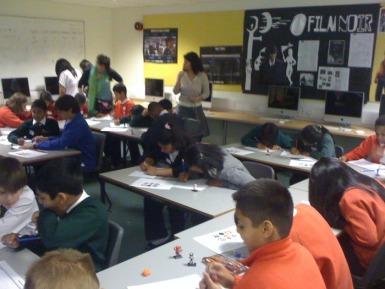
I conducted two pilot lessons for the Year 6 into Year 7 Taster Day at my school on Tuesday 7th July. As these were one off, welcome to my Secondary School activities, I felt they were ideal for exploring the idea of vocademic learning in the classroom, and to give me some data on how to best plan a full GCSE based SOW based on the ideas of the 3 theorists used in an empirical way.
As the lesson was a taster, or introduction for current primary students to Media Studies, my pedagogic level could not be too high, so I opted to deliver a lesson on Superheroes, partly as we already do a unit on Manga and Marvel Comics for the OCR GCSE Media Studies, but mainly because it is a topic that most 10 year olds are familiar with, even if they are not so interested in.
My approach was to try to encapsulate, on a very minor scale, Gauntlett's Lego work, Sennet's "Intelligent Hands" and Claxton's Absorption ideas. I wanted to test whether I could gauge some sense that my learners use of, manipulation and just plain working with physical objects, beyond the ubiquitous pen or pencil, would provide valuable empirical data to back up my vocademic idea. I was very keen to meet my students "half-way" as advocated by Piaget and Papert, as well as Claxton, so I decided to use what I felt might engage them more than straight work sheets, pedagogical transimissions, or even the moving image.*
I therefore obtained 20 Marvel mini-superhero figures and decided that I would build the whole lesson around them. The lesson aim ultimately was to get the learners to reflect upon there own identities after considering what a Superheroes identity is made up of. The students used the models to help them discuss in small groups and construct together a new Superhero, allowing them time and kinaesthetic input as they explored the notion of identity.
* Much of this dependence on models initially came from straightforward observations of my own toddler children, witnessing how they became engrossed with "playing" with their own "toys".
As the lesson was a taster, or introduction for current primary students to Media Studies, my pedagogic level could not be too high, so I opted to deliver a lesson on Superheroes, partly as we already do a unit on Manga and Marvel Comics for the OCR GCSE Media Studies, but mainly because it is a topic that most 10 year olds are familiar with, even if they are not so interested in.
My approach was to try to encapsulate, on a very minor scale, Gauntlett's Lego work, Sennet's "Intelligent Hands" and Claxton's Absorption ideas. I wanted to test whether I could gauge some sense that my learners use of, manipulation and just plain working with physical objects, beyond the ubiquitous pen or pencil, would provide valuable empirical data to back up my vocademic idea. I was very keen to meet my students "half-way" as advocated by Piaget and Papert, as well as Claxton, so I decided to use what I felt might engage them more than straight work sheets, pedagogical transimissions, or even the moving image.*
I therefore obtained 20 Marvel mini-superhero figures and decided that I would build the whole lesson around them. The lesson aim ultimately was to get the learners to reflect upon there own identities after considering what a Superheroes identity is made up of. The students used the models to help them discuss in small groups and construct together a new Superhero, allowing them time and kinaesthetic input as they explored the notion of identity.
* Much of this dependence on models initially came from straightforward observations of my own toddler children, witnessing how they became engrossed with "playing" with their own "toys".
Pilot Findings
I learnt several useful things from these 2 pilot lessons:-
1) 10 and 11 year olds really enjoy working with tangible objects. This gave me personal evidence that older students might be more amenable to using "toys" in the classroom, just as they were when they were younger. Though whether, and in what way, 14 and 15 year olds will take to it as much as these 10 and 11 year olds, will be interesting to find out.
2) Gauntlett's serious play methodology can be successfully transferred to other creative resources. In this instance the lack of building that goes on with the models as opposed to Lego, is made up, to some extent, with the verbal building going on in the learners discourse about superhero identity. Verbal building might be an area to pursue later on too.
3) Using the hands in ways beyond holding a pen absorbs students. They seem to be freer to explore and create than when the pen is involved. This might have something to do with immediacy, as writing things out seems like a process for the students related to being a draft, or a preparation, not in-the-moment as it were.
4) The students were very open to and adept at linking the using of model toys to the abstract and academic notion of identity. This gave me much confidence that Vocademic learning might have a validity beyond my own imagination.
5) It is no secret that students enjoy group work, but I witnessed that this was taken on to a further level when the group worked with physical objects together.
1) 10 and 11 year olds really enjoy working with tangible objects. This gave me personal evidence that older students might be more amenable to using "toys" in the classroom, just as they were when they were younger. Though whether, and in what way, 14 and 15 year olds will take to it as much as these 10 and 11 year olds, will be interesting to find out.
2) Gauntlett's serious play methodology can be successfully transferred to other creative resources. In this instance the lack of building that goes on with the models as opposed to Lego, is made up, to some extent, with the verbal building going on in the learners discourse about superhero identity. Verbal building might be an area to pursue later on too.
3) Using the hands in ways beyond holding a pen absorbs students. They seem to be freer to explore and create than when the pen is involved. This might have something to do with immediacy, as writing things out seems like a process for the students related to being a draft, or a preparation, not in-the-moment as it were.
4) The students were very open to and adept at linking the using of model toys to the abstract and academic notion of identity. This gave me much confidence that Vocademic learning might have a validity beyond my own imagination.
5) It is no secret that students enjoy group work, but I witnessed that this was taken on to a further level when the group worked with physical objects together.
From Pilot Findings to Planning a Vocademic Scheme of Work:
The Model Manipulation Method
My next step was to plan a whole GCSE Scheme of Work which tries to encase Vocademic Learning into its Pedagogical Method. But before doing so I aimed to do several things differently with this GCSE SoW as a result of the pilot lessons:-
1) I felt that Sennet's central concept of "Making is thinking" was not truly adhered to with the use of fixed small Marvel characters, even though it was a step in the right direction. In comparison to Gauntlett's Lego building method, I felt my students weren't being creative enough to warrant the term vocademic neither. Therefore, for the SOW I decided to obtain models which contained enough levels of articulation to engender even greater absorption which would also encourage a more intelligent and creative use of the hands. This I call my Model Manipulation method.
2) Manipulating models, might prove to be very different to Gauntlett's lego method and Sennet's making ideas, but rather than building or making something physical, manipulation of prefigured models is necessitated by time and Vocademic factors. If learners were instructed to build or make something, then that would eat up the academic side of the SoW; and to be honest would be more in line with pure vocational learning. Manipulation allows for enough creativity and play, whilst still keeping it within the remit of Vocademic.
3) I also decided that a space for the characters would be preferable, as may allow the students some boundaries in which to manipulate their models. Therefore, I will be providing some kind of board, or model moving space to orientate the learners in their model's world.
4) I am aware that getting resources together for my Model Manipulation Method is difficult at first, so it is something I will factor into my analysis at the end of the SoW. Even though I am finding it difficult to find articulatable models that can represent characters from 'The Devil's Backbone' (whereas finding superhero ones for the pilot was easy) with some digging I am coming across suitable ones I think, like the ones below.
A Vocademic Scheme of Work - a prototype
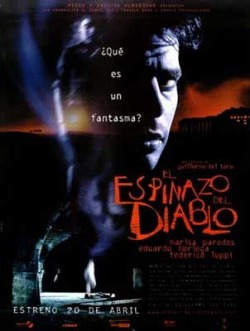
Below are screenshots taken from the 8 week Scheme of Work I wrote in July, 2009, for the WJEC GCSE Film Studies, which my Media Department is introducing for the first time this September, to Year 10 GCSE Media students. Following the pilot's findings, I have tried to incorporate the ideas of Claxton, Gauntlett and Sennet within this traditional GCSE subject to offer it up as a Vocademic model for other GCSE teachers. I decided upon the GCSE qualification as a pilot for 2 reasons:-
1) I wanted to test the academic side of the my Vocademic idea, by making sure it was part of an examined unit of work.
2) I am introducing the whole Film GCSE as a pilot this year so it seemed fitting to combine it with my pilot vocademic scheme too.
The SoW is for the second examination unit called 'Exploring Film Outside Hollywood' concentrating on one film in particular, 'The Devil's Backbone', which is selected from a prescribed list. I think by selecting this individual film in particular could help me in my Vocademic Project, because its protagonists are similar in some ways to the students I will be teaching it to, something Claxton is insistent upon. Getting the correct models will be key, however.
I am hoping that the skull faced models on the far left will successfully mirror the ghost character Santi (immediate left), from the film. The degree to which my students agree with this hope will be monitored carefully. It might prove helpful when trying to look at the degree of imagination my learners are able and required to do.
My aim is to try and get the film knowledge necessary to pass the examination to meet half-way with the interests, ideas and experiences of the students in my class. I think that by using a combination of Sennet, Claxton and Gauntlett through my Model Manipulation Method, then I might get closer to this than through a traditional transmitter type of teaching, which is much criticised as a form of "non-teaching", that only teaches to tests, and doesn't really build true and life-long learning.
Screenshots of 'The Devil's Backbone' Scheme of Work
You can download below the Scheme of Work if you have access to Smart notebook software, which can be done free on a 30 day trial from www.smartech.com
| film_outside_hollywood.notebook |
There are several, but one lesson I am particularly keen to test whether my Model Manipulation Method can encourage thoughts along intellectual and so academic lines will be when the class comes to consider themes in the film for the 3rd question in the examination. Therefore, I have set out my ideas of how to tackle this vocademically:-
A Vocademic Lesson
On the Theme of Fascism versus Communism in 'The Devil's Backbone' using
1) The students' own world view (Claxton)
2) The manipulation of action figures
(Sennet and Gauntlett)
This lesson will be taught in Week 6 of the SOW following
lessons on:-
1) introduction to Spanish film
2) Comparisons with Hollywood cinema
3) A close reading of the film concentrating on narrative and character
I don't think it can be denied that a vocademic approach has been planned for here, what with the academic, comparative study on the ideologies of Fascism and Communism, but then incorporating it within the students' world view and experience, here via school, and the integral building in of the model manipulation work.
Whether the outcome of this lesson is vocademic will be analysed during the lesson, in feedback in the following lesson, and in the exhibition as part of an analysis of the whole Scheme. This particular lesson helps one examination question in particular on theme. The students will do a mock in the eighth week of the Scheme, and this individual question will be marked and analysed closely in particular for any trace that my Manipulation Method, and Vocademic Learning model has had any positive bearing upon the results, however small at this stage.
lessons on:-
1) introduction to Spanish film
2) Comparisons with Hollywood cinema
3) A close reading of the film concentrating on narrative and character
I don't think it can be denied that a vocademic approach has been planned for here, what with the academic, comparative study on the ideologies of Fascism and Communism, but then incorporating it within the students' world view and experience, here via school, and the integral building in of the model manipulation work.
Whether the outcome of this lesson is vocademic will be analysed during the lesson, in feedback in the following lesson, and in the exhibition as part of an analysis of the whole Scheme. This particular lesson helps one examination question in particular on theme. The students will do a mock in the eighth week of the Scheme, and this individual question will be marked and analysed closely in particular for any trace that my Manipulation Method, and Vocademic Learning model has had any positive bearing upon the results, however small at this stage.
